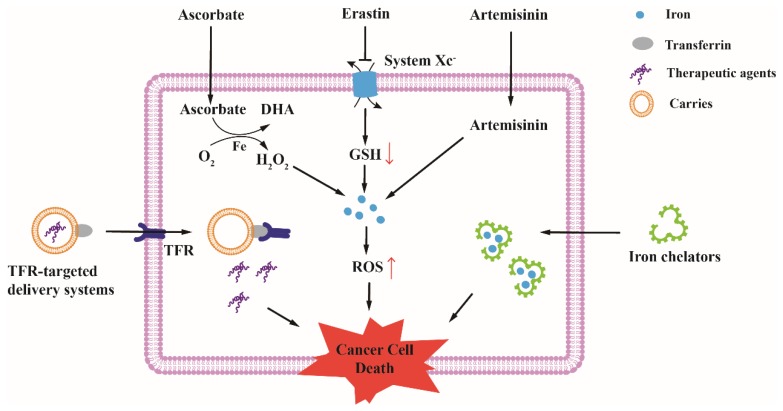Figure 3.
Therapeutic opportunities for cancer based on altered iron metabolism. TFR-targeted delivery systems can deliver drugs, proteins, nucleic acids, and viruses into cancer cells through binding to TFR, and these therapeutic agents induce cancer cell death through different mechanisms. Some potential anti-cancer drugs, such as Ascorbate, Erastin and Artemisinin, can disrupt redox homeostasis by intracellular high level of iron. H2O2 produced from high-dose ascorbate react with excess intracellular iron to generate ROS; Erastin deplete GSH (red ↑) by inhibiting system , subsequently, excess intracellular iron lead to an increase of ROS levels (red ↓); Artemisinin react with excess intracellular iron to promote the production of ROS. Excess cytotoxic ROS induce cancer cell death. Iron chelators decrease intracellular iron by binding iron with a high affinity. Lack of iron in cancer cells inhibits cell growth and proliferation, leading to cell death.

